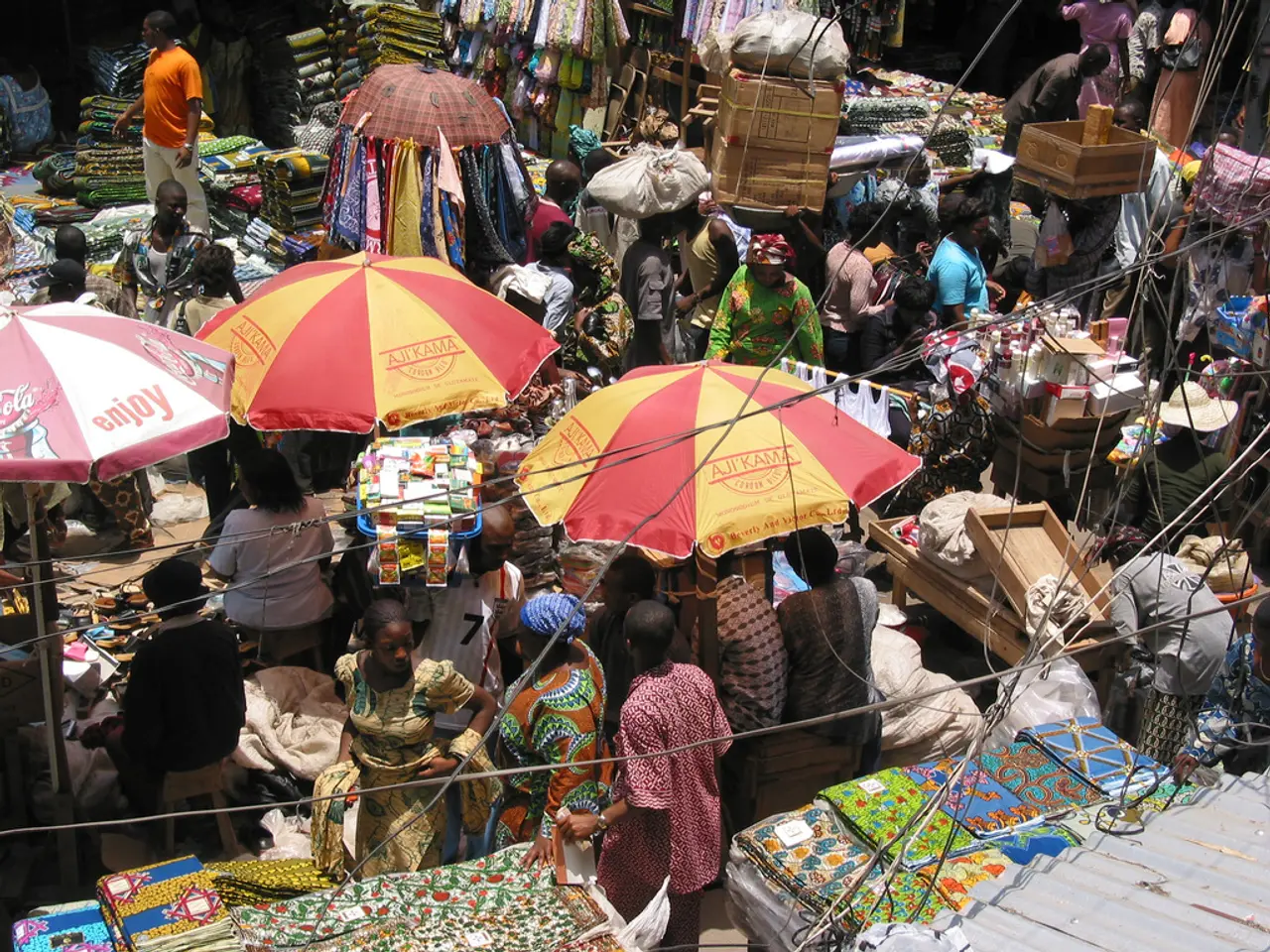Unprecedented Methane Emissions from Fossil Fuel Sources Reach All-Time Highs, Yet Ignored Persists as a Global Concern
In a concerning development, methane emissions from the global fossil fuel industry are significantly higher than what countries officially report to the United Nations, with over 80% of these emissions going unchecked. According to recent data, only 5% of the total oil and gas production meets "near-zero" methane standards, highlighting the urgent need for improved tracking and mitigation measures.
The underreporting of methane emissions primarily stems from measurement challenges, inadequate monitoring and regulation, lack of transparency, and greenwashing risks. Many methane emissions come from diffuse sources such as leaks at well sites, pipelines, and coal mines, which are difficult to detect and quantify accurately. This is particularly true in Australia, where the government has acknowledged at least a 30% uncertainty in methane emissions reporting from open-cut coal mines.
To address these challenges, several advanced technologies and strategies are being deployed. Satellite-based monitoring, for instance, provides scalable, frequent, and independent monitoring across wide geographic areas. AI-driven analytics enhance detection sensitivity and data interpretation, helping identify previously undetected emission hotspots and verify self-reported data. Real-time public monitoring platforms, such as FracTracker, allow researchers, regulators, and the public to track methane emissions transparently, increasing accountability.
Advanced Leak Detection and Repair (LDAR) technologies, including infrared cameras, drones, and handheld detectors, facilitate frequent inspections at facilities to quickly identify and fix methane leaks, significantly reducing emissions at low or no net cost. Regulatory frameworks with enforcement, such as methane fees and mandatory LDAR programs backed by penalties, create financial incentives to reduce emissions and improve reporting. Comprehensive Monitoring, Reporting, and Verification (MRV) systems ensure more accurate, verifiable emissions inventories that support compliance and climate finance mechanisms.
Despite these advancements, abandoned oil and gas wells and defunct coal mines continue to leak methane into the atmosphere, with these ghost sites ranking as the world's fourth-largest emitter in 2024 if treated as a single source. Fossil fuel operations worldwide released over 120 million tonnes of methane last year, matching near-record levels and showing little sign of decline since 2019.
Coal is a major blind spot in methane emissions, with China, the top emitter of energy-related methane, owing most of its status to its coal sector. Methane, an extremely potent gas, accelerates climate change and is about 84 times more potent than CO2 at trapping heat. A significant share of these fixes would pay for themselves within a year, since captured methane can be sold as natural gas.
The International Energy Agency (IEA) highlights abandoned fossil fuel sites as a significant contributor to methane leaks, with 8 million tonnes emitted in 2024 alone. Technologies to control methane emissions have been successfully deployed in multiple places around the world, according to IEA policy analyst Tomás Bredariol. However, Methane from coal often escapes scrutiny, and "coal mines are still being ignored," according to Ember analyst Sabina Assan.
The data shows more talk than action in reducing methane emissions, despite the urgent need to combat global warming. The past two years have each set new global temperature records. The events were recorded across the United States, Turkmenistan, and Russia. As the world grapples with the climate crisis, it is crucial to prioritise the implementation of effective methane emission control strategies to minimise the impact of these powerful greenhouse gases.
- The global fossil fuel industry's official methane emissions reports to the United Nations underestimate the true amount, with over 80% going unchecked.
- Lack of transparency, greenwashing risks, and measurement challenges contribute to the underreporting of methane emissions.
- Satellite-based monitoring, AI-driven analytics, and real-time public monitoring platforms are among the technologies deployed to address these challenges.
- Advanced Leak Detection and Repair (LDAR) technologies help identify and fix methane leaks at facilities, reducing emissions at low or no net cost.
- Regulatory frameworks with enforcement, such as methane fees and mandatory LDAR programs backed by penalties, create financial incentives to reduce emissions and improve reporting.
- Comprehensive Monitoring, Reporting, and Verification (MRV) systems ensure accurate, verifiable emissions inventories that support compliance and climate finance mechanisms.
- Abandoned oil and gas wells and defunct coal mines continue to leak methane into the atmosphere, ranking as the world’s fourth-largest emitter in 2024 if treated as a single source.
- Despite advancements in methane emission control strategies, coal operations, particularly in China, are a major blind spot, contributing significantly to energy-related methane emissions which accelerate climate change.




